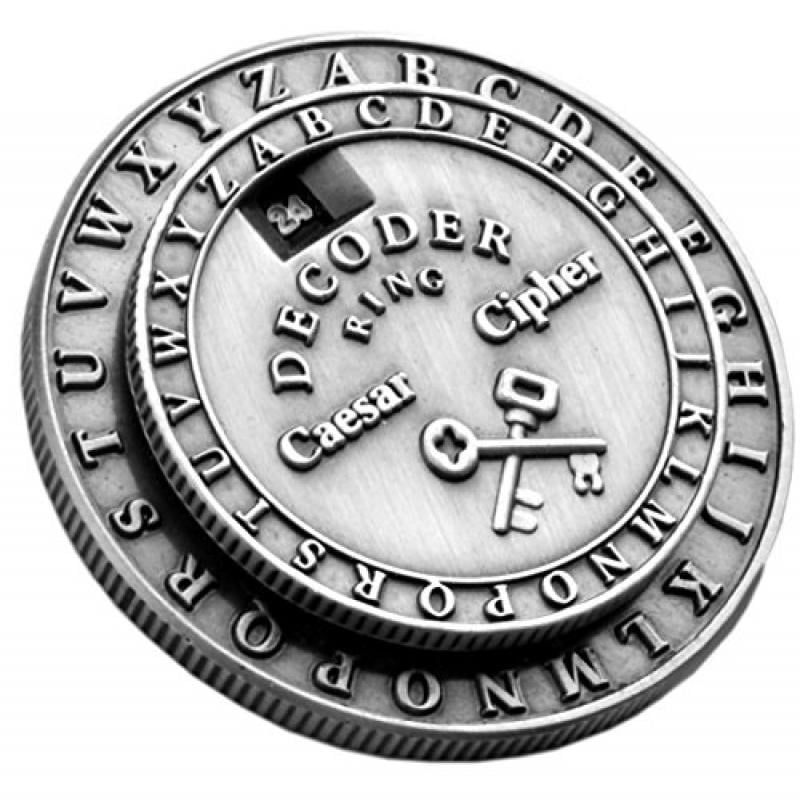

Ī Caesar cipher with a shift of one is used on the back of the mezuzah to encrypt the names of God. The earliest surviving records date to the 9th-century works of Al-Kindi in the Arab world with the discovery of frequency analysis. It is unknown how effective the Caesar cipher was at the time there is no record at that time of any techniques for the solution of simple substitution ciphers. The replacement remains the same throughout the message, so the cipher is classed as a type of monoalphabetic substitution, as opposed to polyalphabetic substitution. In the above, the result is in the range 0 to 25 i.e., if x + n or x − n are not in the range 0 to 25, we have to subtract or add 26.) (There are different definitions for the modulo operation.
Caesar cipher decoder mod#
Encryption of a letter x by a shift n can be described mathematically as, E n ( x ) = ( x + n ) mod 26. The encryption can also be represented using modular arithmetic by first transforming the letters into numbers, according to the scheme, A → 0, B → 1. Plaintext: THE QUICK BROWN FOX JUMPS OVER THE LAZY DOGĬiphertext: QEB NRFZH YOLTK CLU GRJMP LSBO QEB IXWV ALDĭeciphering is done in reverse, with a right shift of 3.

When encrypting, a person looks up each letter of the message in the "plain" line and writes down the corresponding letter in the "cipher" line. For instance, here is a Caesar cipher using a left rotation of three places, equivalent to a right shift of 23 (the shift parameter is used as the key): The transformation can be represented by aligning two alphabets the cipher alphabet is the plain alphabet rotated left or right by some number of positions. As with all single-alphabet substitution ciphers, the Caesar cipher is easily broken and in modern practice offers essentially no communications security. The encryption step performed by a Caesar cipher is often incorporated as part of more complex schemes, such as the Vigenère cipher, and still has modern application in the ROT13 system. The method is named after Julius Caesar, who used it in his private correspondence. For example, with a left shift of 3, D would be replaced by A, E would become B, and so on. It is a type of substitution cipher in which each letter in the plaintext is replaced by a letter some fixed number of positions down the alphabet.
Caesar cipher decoder code#
In cryptography, a Caesar cipher, also known as Caesar's cipher, the shift cipher, Caesar's code or Caesar shift, is one of the simplest and most widely known encryption techniques. The cipher illustrated here uses a left shift of three, so that (for example) each occurrence of E in the plaintext becomes B in the ciphertext. I guess there is a problem with it because it won't display.The action of a Caesar cipher is to replace each plaintext letter with a different one a fixed number of places down the alphabet. if statement and it will append a character with ASCII value 30(35 - 5) which is ␞(record separator delimiter). If you run this code you will see that when the loop inside decrypt() function come to '#'(whose ASCII value is 35) it will jump to 3. I just rewrote your code and added a few print statements. Iuser_decrypt_message = input("Please enter string to decrypt: ")ĭecrypted_message = decrypt(iuser_decrypt_message, user_decrypt_offset) Print(decrypted_message, ord(decrypted_message)) If ord(letter) + user_decrypt_offset 126:ĭecrypted_message += chr(ord(letter) + user_decrypt_offset - 95)ĭecrypted_message += chr(ord(letter) - user_decrypt_offset)ĭef decrypt(iuser_decrypt_message, user_decrypt_offset): User_decrypt_offset = int(input("Please enter offset value (1 to 94): ")) While not user_decrypt_offset in range (1, 95): However, it is not working 100%, skips over symbols from the ASCII table for some reason, and isn't getting every value correct?Įxpected output - tjcqg_qf}rdjC}~ user_decrypt_message = input("Please enter string to decrypt: ") If a value with the offset is 126 on the ASCII table it will loop back around to the appropriate value.

Using ord() and chr () to decrypt a string.


 0 kommentar(er)
0 kommentar(er)
